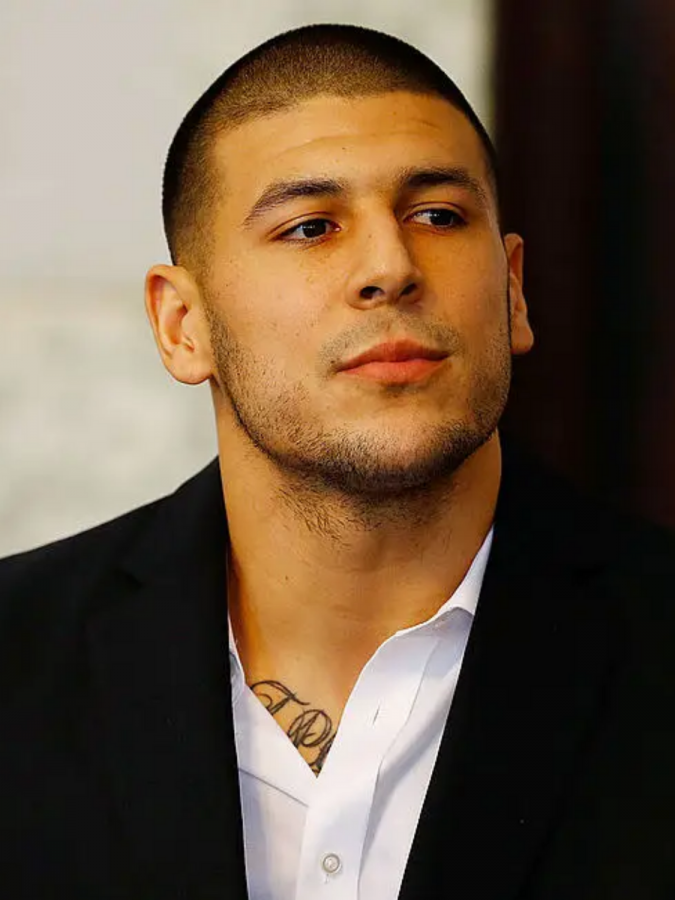How could someone with such a promising future end up in such a tragic situation? Aaron Hernandez, once a celebrated athlete and star of the football field, became entangled in a web of allegations that would eventually lead to his downfall. A bold statement must be made here: The trajectory of Hernandez's life serves as a cautionary tale about choices, influences, and accountability.
Aaron Hernandez, born on November 6, 1989, in Bristol, Connecticut, was destined for greatness from an early age. His athletic prowess earned him recognition at Ball State University, where he played men's volleyball under the nickname Chooky. Known for his versatility as both an opposite hitter and setter, Hernandez quickly rose through the ranks, drawing attention from professional scouts. However, it wasn't just his talent that set him apart; it was also his charisma and leadership qualities that made him stand out among peers. Yet, despite these achievements, Hernandez's personal life began unraveling due to circumstances involving relationships and questionable decisions.
| Bio Data | |
|---|---|
| Full Name: | Aaron Donovon Hernandez |
| Date of Birth: | November 6, 1989 |
| Place of Birth: | Bristol, Connecticut |
| Parents: | Henry and Michelle Hernandez |
| Siblings: | 6 siblings - Luke, Caleb, Mallory, Margo, Marina |
| Education: | Ball State University |
| Profession: | Former NFL Player (New England Patriots) |
| Fiancee: | Shayanna Jenkins |
| Reference Website: | Aaron Hernandez Biography |
The relationship between Aaron Hernandez and Shayanna Jenkins dates back to their childhood days in Bristol, Connecticut. They reconnected during college, and their bond deepened over time. Jenkins, portrayed in FX's American Sports Story, stood by Hernandez amidst numerous controversies surrounding his career. However, tensions arose when evidence emerged suggesting Hernandez's involvement in criminal activities. During his murder trial in Fall River, Massachusetts, Jenkins testified under oath that Hernandez had instructed her to remove a box containing incriminating items from their shared home near the crime scene. This testimony further complicated their already strained relationship.
Hernandez's alleged crimes cast a shadow not only over his own life but also affected those closest to him, including his fiancée and family members. Shaneah Jenkins, Shayanna's sister, found herself embroiled in the controversy after dating Odin Lloyd, the victim in one of the cases linked to Hernandez. As details unfolded during the trial proceedings, the sisters faced immense pressure, leading to rifts within their family circle. Meanwhile, Hernandez's legal team worked tirelessly to mitigate damages while addressing accusations related to financial benefits stemming from potential settlements or insurance claims tied to his career earnings.
Throughout the ordeal, questions lingered regarding whether Hernandez fully understood the implications of his actions. Critics argued that individuals like Urban Meyer, former coach at Ohio State University, might have inadvertently contributed to enabling behaviors exhibited by athletes under their supervision. Such discussions highlighted broader issues concerning mentorship, responsibility, and support systems necessary for guiding young talents navigating high-pressure environments typical of professional sports careers.
In conclusion, examining Aaron Hernandez's story reveals valuable lessons applicable beyond athletics. It underscores the importance of fostering positive role models who emphasize integrity alongside excellence. Furthermore, it calls attention to systemic challenges requiring reform so aspiring athletes receive adequate guidance throughout their journey toward success without compromising ethical standards essential for long-term fulfillment and happiness.
As we delve deeper into Hernandez's past, it becomes evident that multiple factors contributed to his descent. Growing up in a tight-knit community provided initial stability; however, exposure to different lifestyles upon entering collegiate athletics introduced new pressures. Balancing academic commitments alongside rigorous training schedules proved challenging for many student-athletes, often leaving them vulnerable to external influences detrimental to their development. In Hernandez's case, this susceptibility manifested through associations with individuals involved in illicit activities, ultimately culminating in dire consequences.
Moreover, media coverage surrounding Hernandez's trials brought forth critical conversations around race, class, and privilege within the context of American society. Public perception varied widely depending on pre-existing biases held by observers. Some viewed Hernandez sympathetically, attributing his mistakes to systemic inequalities faced by minority groups striving for upward mobility. Others condemned him outright, emphasizing individual accountability regardless of background circumstances. These debates underscored complex dynamics shaping societal attitudes towards crime and punishment, particularly when high-profile figures become implicated.
Ultimately, Aaron Hernandez's legacy remains multifaceted, encompassing triumphs achieved on the gridiron juxtaposed against failures encountered off the field. His narrative invites introspection about how best to nurture emerging talents while safeguarding them against pitfalls inherent in competitive arenas dominated by intense scrutiny and heightened expectations. By learning from Hernandez's experiences, future generations may avoid repeating similar missteps, paving the way for more sustainable paths toward achievement tempered by wisdom and foresight.



